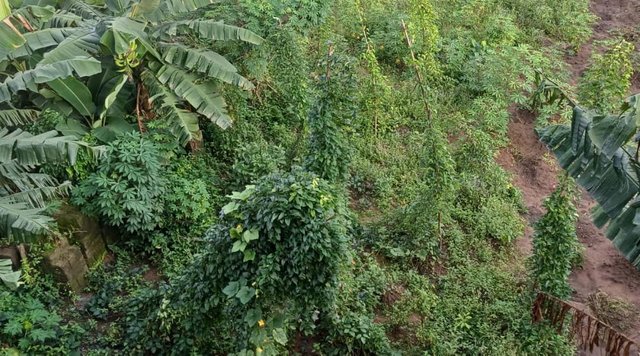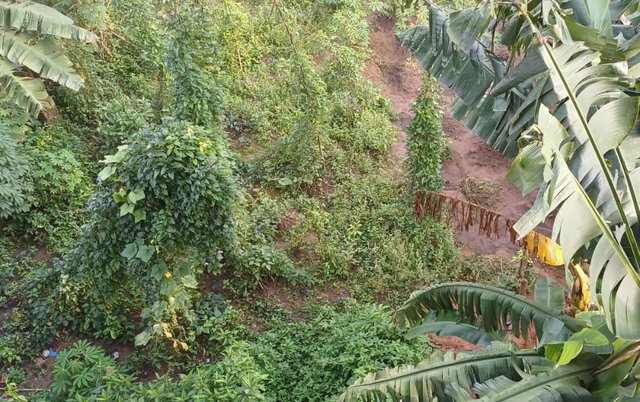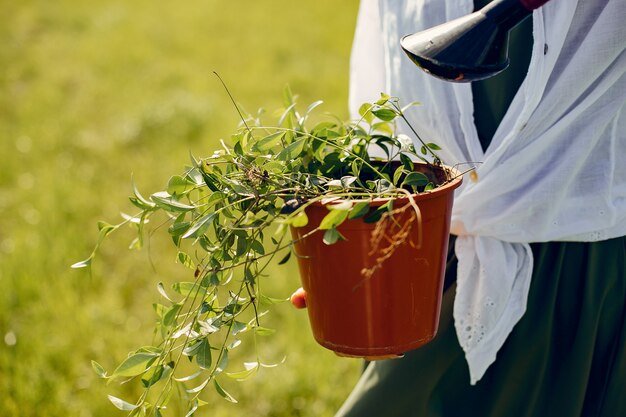"SEC | S20W3:"Identification and Elimination of Crop Pests"
Hello!!!
It is all about agriculture here, and for this week, I will be making my entry on the identification and elimination of crop pests.

Visiting the farm at the neighbourhood gave me an insight, though I was careful not to trespass so as not to raise unnecessary suspicion related to theft. I was able to have a first view of a mix farming where I saw a hub of plantain at the center of the farm, yam and casaava.
Some of my observations of identified pests:
Cassava Hornworm: I was able to see this pest by its cuspicious appearance. It is a large and green bodylike worm of a typical caterpillar. They freely feed on the leaves and stems.
Leaf folders: This was another one that was obvious from the nature of some of the cassava leaves. This kind of pest isn't just good as it is an enemy of our crop by depriving it of having enough photosynthesis prcoess.
Rats: I saw both the commonly domestic and bush rats. These are enemies of our crops. They attack the crop fruits, and mosts are seen digging the plant roots to eat up the tubers.
Snails: I also saw this on the farm. I never knew they also constitute the pest fakily. But seeing them also sticking firmly on yam leaves and stems shows they also feed from them.
Birds: i saw birds flying into the farm and out. Coming to pickup remains of unharvested and remains of maise crops. Also seen peaching on the plantain bulbs.
Cassava Hornworms - Neem-based and Garlic-based insecticides
Leaf folders - Neemix (neem oil), Pyrethrin sprays (e.g., PyGanic)
Rats - Zince and Aluminium phosphate, Local Traps.
Snails - Iron phosphate and copper based products like sluggo. We can do hand picking as well.
Birds - Bird repellent sprays like methyl anthranilate.

Firstly, I could remember when we do this kind of trap in the village. Each time I visit grandma and we go to the farm, I always end up making a rodent trap for her on the farm. These rodents usually come to disturb her farm yield.
Materials used are very simple;
- A bow of stem, strong enough to be bent without breaking. It should be very elastic to exact pressure.
- Rope like stems or tiny wire gauze
- A v-shape like stem, pieced towards the rodent route
How this works is that
- the elastic bow stem is pierced formly into the ground
- the wire gauze tied to the elastic steem, at the stem's tip above
- the v-shape mini stem also pireced into the soil close to the rodent route
- The elastic stem is dragged down to create pressure towards the v-shape stem.
- The wire is pulled and guarded by a slightly free sliced wood, which triggers and pulls back.
Secondly is the "Sticky Traps":
This is another common traps that we make with latex materias. All we needed to do was to bring a catton of paper and pour a latex or gummy sustenance on it. This has been proven as more effective as it grabs any form of insects or pests around it.
The use of biochemical is one that isnusually cost effective most times to the farmers. There are many crops that, if these biochemical products are introduced to them, they are relatively cheaper for the farmers.
For fruit based crops, we have the berries and citrus, leafy vegetables, and tomatoes for our vegetables, corn, and wheat for our field crops.
Why we may say the cost-effective effect of because of their multifaceted role. We do not need to start reapplying or having multiple chemicals or biological products used on the same farm. A singular use of them handles many of these concerns.
The use of biochemical pesticides helps in tge multiple roles as listed below;
- Pest control (use of neem oil and copper baded products)
- Help in crop growth regulation (axcins)
- Help regulate nutrients and its better management:*
Therefore, we can say biochemicals.are cost effective for the farmer if it improves the spil both on thenshort and long term, improve crop yields, reduces weeds and subsequent labor cost, less toxic, and as well as resolve our call for concern.
| Pests | Pesticides |
|---|---|
| Aphids | Pyrethroids & Neonicotinoids like permethrin imidacloprid |
| Whiteflies | Pyrethroids & Neonicotinoids like permethrin imidacloprid |
| Caterpillars | Pyrethroids like permethrin and Bacillus thuringiensis |
| Rodents/Rats | Warfarin, Zinc, and Aluminium phosphide |
| Birds | Methyl anthranilate and copper oxychloride |
This is my entry. I want to invite @eveetim, @nsijoro, @ikwal.

Welcome to the agro-learning challenge season 20.
Observations and suggestions:
. It was good to see that you went to a neighbourhood farm to look out for this crop pest. Identifying and knowing what kind of pests that attack our farm is key and good to see that ability.
. Good knowledge of pesticide prescription on identified crop pests.
. Your presentation on those local traps needed to control and curb farm pests were nicely stated, especially the first illustration for rodents.
. Generally, you have a good post presentation and knowledge base for this task.
Thank you for your participation. We hope to see you in week 4.
TEAM 4
Congratulations! Your post has been upvoted through steemcurator06. Good post here should be..Wow! You really so have a good knowledge about these things. Mine on this community is just to learn from you. I have learnt names of pests, how to prevent/control them from destroying our crops and the names of possible pesticides to use.
Thank you for the invitation, great lesson learned. Best wishes sir.